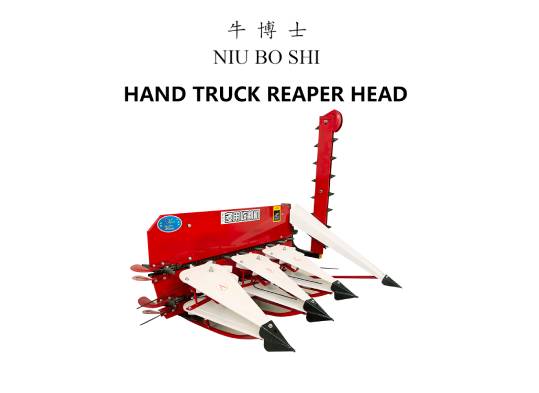Innovative Wheat Harvesting and Binding Equipment for Efficient Agricultural Practices
The Evolution and Importance of Wheat Cutting and Binding Machines
Wheat is one of the most vital staple crops globally, serving as a key ingredient in numerous food products. The process of harvesting wheat, traditionally labor-intensive, has undergone significant transformation with the invention of wheat cutting and binding machines. These innovations have revolutionized agriculture, enhancing efficiency, productivity, and sustainability in the farming sector.
Historically, wheat harvesting was carried out by hand using sickles or scythes, techniques that required considerable physical effort and time. The invention of mechanical harvesters in the late 19th century marked a turning point in agriculture. The first reapers, designed to cut and bind wheat, allowed farmers to cover larger areas in a fraction of the time it took to do so manually. One of the earliest and most notable inventions was Cyrus McCormick's mechanical reaper, patented in 1834, which paved the way for future advancements in agricultural machinery.
As technology continued to evolve throughout the 20th century, so did wheat cutting and binding machines. Modern machines, such as combine harvesters, are equipped with advanced features that automate the entire harvesting process — from cutting the stalks to separating the grain from the chaff and even binding the straw. These machines are designed to operate on a wide range of terrains and can efficiently harvest thousands of acres in a single season.
The impact of these machines on productivity cannot be overstated. A modern combine harvester can harvest up to 40 acres of wheat per day, an output that was unattainable with manual methods. This increased efficiency not only allows farmers to maximize their yields but also significantly reduces labor costs. In regions where labor shortages may be a concern, the reliance on machinery ensures that harvesting can be completed in a timely manner, avoiding potential losses due to weather conditions or crop spoilage.
Moreover, wheat cutting and binding machines have profoundly influenced the economic landscape of agriculture
. With improved efficiency and yield, farmers are better positioned to meet the growing global demand for wheat. The ability to harvest crops more quickly and effectively contributes to food security, particularly in developing countries where wheat serves as a primary food source. Additionally, as farmers achieve better outputs, they can invest in more sustainable farming practices, further benefitting the environment.wheat cutting and binding machine

The design of modern wheat cutting and binding machines also emphasizes reducing fuel consumption and emissions. Many machinery manufacturers are now focusing on creating greener technologies that minimize environmental impact. For instance, some combines are equipped with precision-guided systems that optimize fuel usage and reduce wastage, aligning productivity with sustainability. Furthermore, innovations in machine design have enabled a reduction in soil compaction, preserving soil health for future cropping seasons.
Despite the many benefits these machines offer, challenges remain. The initial investment required for purchasing and maintaining advanced wheat harvesting equipment can be substantial, particularly for small-scale farmers. However, many are finding ways to overcome this barrier by engaging in cooperative buying practices or leasing equipment, which allows them to share resources and reduce costs.
Additionally, as technology continues to advance, there is a growing need for training and education in operating and maintaining these sophisticated machines. Agricultural extension services and institutions play a vital role in providing resources to farmers, ensuring they are equipped with the knowledge necessary to maximize the benefits of their equipment.
Looking ahead, the future of wheat cutting and binding machines is paving a way for smart agriculture. With the integration of artificial intelligence, data analytics, and IoT (Internet of Things), farmers can monitor crop health and optimize their harvesting strategies, further enhancing efficiency and yield. Machine learning algorithms can analyze weather patterns, soil conditions, and crop development, allowing farmers to make data-driven decisions for improved outcomes.
In conclusion, wheat cutting and binding machines are more than mere tools; they represent a significant advancement in agricultural practices. They have transformed the efficiency of wheat harvesting, bolstering productivity and economic viability in the sector. As we continue to innovate and adapt to new challenges, these machines will play an increasingly crucial role in securing global food supplies and promoting sustainable farming practices for generations to come.
Latest news
-
When to Upgrade Your Old Forage HarvesterNewsJun.05,2025
-
One Forage Harvester for All Your NeedsNewsJun.05,2025
-
Mastering the Grass Reaper MachineNewsJun.05,2025
-
How Small Farms Make Full Use of Wheat ReaperNewsJun.05,2025
-
Harvesting Wheat the Easy Way: Use a Mini Tractor ReaperNewsJun.05,2025
-
Growing Demand for the Mini Tractor Reaper in AsiaNewsJun.05,2025







